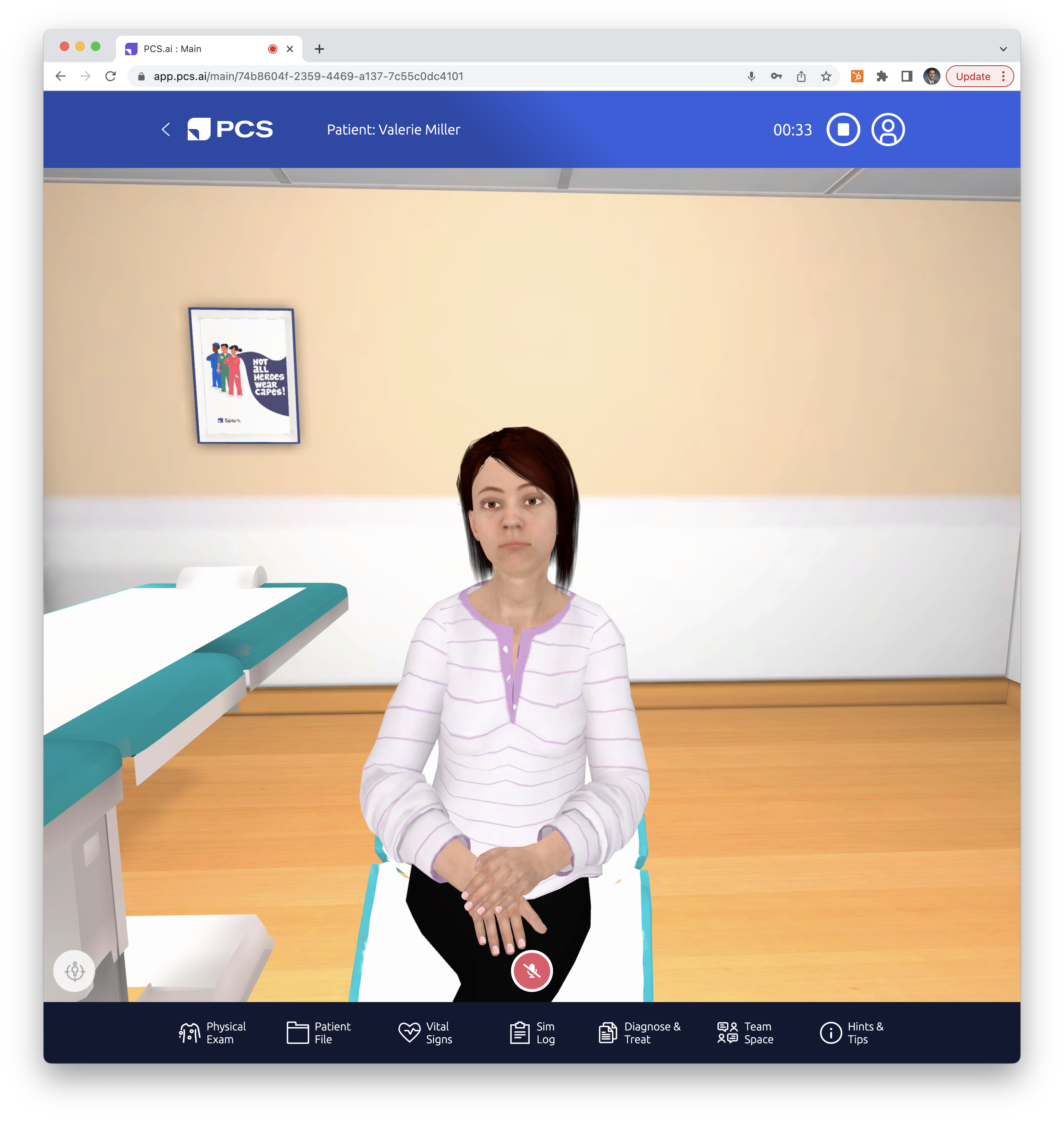Summary Statement: As Healthcare “Simulationists” we constantly ask ourselves, where do we start improving our training for the nurses, physicians, and allied healthcare professionals of 2050 through healthcare simulation today? Patient simulators needs both an ongoing evolution along the traditional dimensions or realism, dependability and affordability as well as a revolution to broaden the potential of simulation. Integrating Artificial Intelligence (AI) driven communication technologies into simulators for training healthcare professionals of the future will be revolutionary.
A Patient Communication Simulator is a device that integrates verbal communication functionality into a traditional full-body patient simulator by merging physiology simulation and communication training modalities into a single scenario-driven instructor controlled experience. In this article, we are evaluating the first commercially available Patient Communication Simulator (PCS) and its future potential.
How will the nurses, physicians, and allied healthcare professionals of 2050 differ from their peers fifty years earlier? Future healthcare professionals of 2050 will be making enhanced decisions. Enhanced decisions through collaborative consultation; think: increased telemedicine. Enhanced decisions with information at their fingertips; think: wearable computing. Enhanced Decisions supported by technology; think: AI & machine learning.
Correspondingly, future healthcare professionals of 2050 will have escalated the human element, which will be proportionally more important for care of the future patient and success of future health care teams; thus, furthering efforts towards achieving the balance of ‘Art and Science of Medicine’.
Today, a significant portion of simulation-based training is for a healthcare system specializing in acute, curative, episodic issues. Learners are trained to make emergency, high pressure decisions in the fraction of a second. This skill will remain critical in healthcare; but the call to action is clear, it’s time to do more and do better than just a quantitative reformation.
Patient simulators have been proven to be efficient and low-risk tools for several elements of the training of healthcare professionals, from procedural skill development to team communication.

Simultaneously, trained standardized patients have introduced similar standardization and consistency in simulated patient-professional encounters, focusing on communication and physical interactions. The next generation of patient simulators are devices that can merge the benefits of these distinctly different approaches into a seamlessly integrated experience, further enhancing the realism of the simulation hence better facilitating its ultimate educational goals.
Simulation can be qualitatively better as a tool, by not only training to make triage decisions, but simultaneously allowing learners to understand the fundamentals in human-interactions. Training must improve for a stronger connection to the patient. Simulation must be more relatable. The time to start moving in that direction is now.
Building on today’s needs with more advanced technology, The Patient Communication Simulator (PCS) is the first of its kind, infused with features and functions that a mere decade ago sounded like science-fiction. ALEX is a revolutionary new product that integrates AV enhanced communication into a general purpose, full-body patient simulator, with the objective of aiding in the training of non-technical skills.
Using pre-programmed scenarios to drive not only the physiological data but also the spoken responses and reactions of the patient, a previously unattainable level of learning and standardization, is possible across a larger number of dimensions of the simulation experience.
Is this the revolution and evolution we’ve been waiting for? Does this balance art and science of medicine? Yes, it is the natural progression in technology to help train healthcare professionals for the future.
Contributing Authors:
Balazs Moldovanyi, M.Sc. Computer Engineering, MBA
Ádám Helybély, M.Sc. Computer Engineering, MBA
Hugo Azevedo, BSc, Applied Mathematics, MS, Biomedical Engineering,
Michelle Castleberry, BSc, Professional Communication


